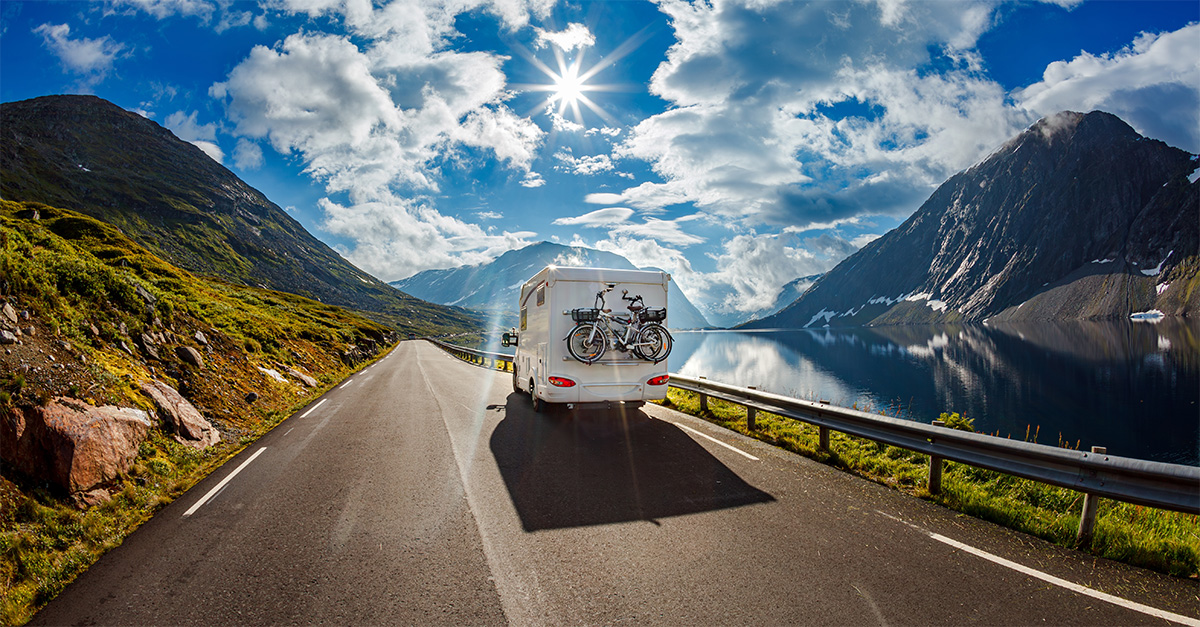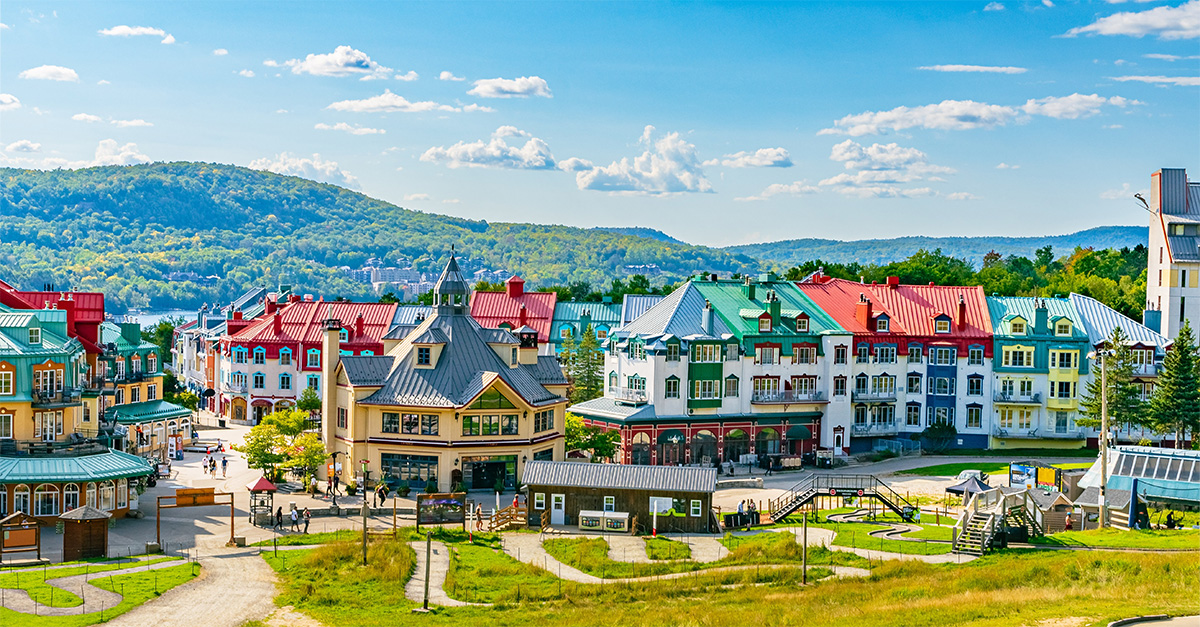Tamara Hinson discovers a wilder side of the Caribbean on a nature tour of Tobago.
Click here to download and save as a PDF.
Our captain – a Rastafarian Jack Sparrow – lounges at the front of the glass-bottomed boat, occasionally springing to life to point out colourful fish or help snorkel-clad guests clamber on board.
We’re floating in the sea off Tobago, the most beautiful Caribbean island I’ve visited, on a tour of the waters just off Pigeon Point Heritage Park in the south.
It doesn’t even matter that I’ve forgotten my flippers because, despite being far out to sea, we’ve dropped anchor at the Nylon Pool (pictured), so called because of its shallow depth.
I jump into the waist-high water and it feels surreal – I’m in the middle of the ocean, sipping a cocktail. Nearby, girls cheer when the DJ plays the official carnival song; it’s like an open-air disco in the middle of the sea.
And the price tag for this experience? A bargain £15, reflecting Tobago’s status as one of the cheapest Caribbean islands, with dozens of companies offering similar tours.
Small packages
The island is also without a single chain hotel, so my base was at Castara Retreats on the western, wilder side. Its 16 bungalows are connected by lizard-spotted pathways that weave through thick foliage. Mine had an open-air kitchenette and Missoni-esque sofas on the balcony.
Porridge, the laid-back owner, was born here. One morning, during a walk to a waterfall, he pointed out his childhood home.
“I’m not one for sprawling on sun beds or sipping rainbow-hued cocktails so Tobago’s appeal was the ease with which I could explore its vast tracts of wilderness.”
I’m not one for sprawling on sun beds or sipping rainbow-hued cocktails (although there’s a higher density of both in the more developed south, home to the cruise port), so Tobago’s appeal was the ease with which I could explore its vast tracts of wilderness. You’re never far from an empty beach or wildlife-packed forest.
Take the bioluminescence tour, for example (£43 per person with Stand Up Paddle Tobago). A quick science lesson: bioluminescence occurs when dinoflagellates – tiny single-cell plankton – glow and flash, a startle response that aims to deter predators.
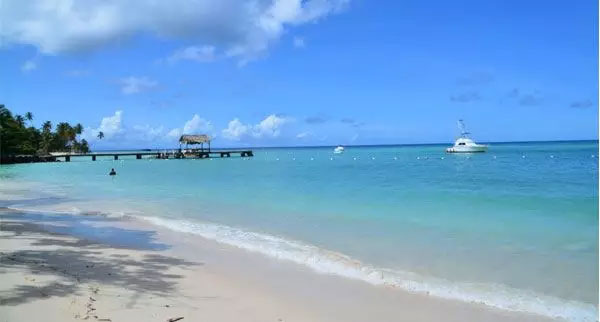
On Pigeon Point beach, the sun was sinking toward the horizon as we dragged our kayaks into the water and paddled towards Bon Accord Lagoon.
By the time we reached the sandbar between ocean and lagoon, the only light came from thousands of flickering stars. Duane, who founded Stand Up Paddle Tobago, turned his head torch toward grey shapes flitting above the water, which turned out to be bats, albeit harmless ones with no interest in humans. He then flicked his beam in the direction of a group of trees to reveal dozens of pelicans perched on the branches.
“Someone splashed me and I was covered in tiny sparkles aglow in my lap, and we flopped out of our kayaks into the warm water, creating clouds of glowing, silvery light.”
But it was the bioluminescence we were here for. We pulled our kayaks into the lagoon and paddled along its banks, and our oars were soon leaving shimmering wakes. Someone splashed me and I was covered in tiny sparkles aglow in my lap, and we flopped out of our kayaks into the warm water, creating clouds of glowing, silvery light.
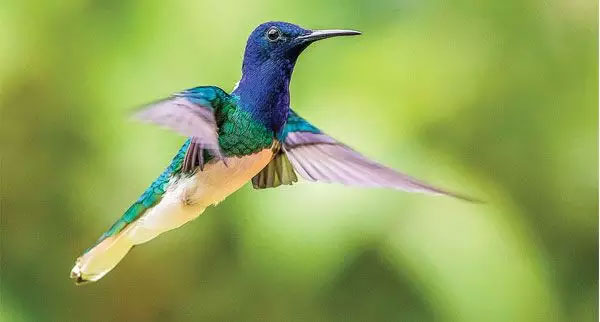
There was another surprise as we headed back to shore – an army of flying fish, bouncing across the water. One collided with a stand-up paddle boarder and she tumbled into the sea; another thumped into my kayak. My companions grew silent, waiting for their own aquatic missile strike.
Landlubbers are well catered for, too. Tobago has the western hemisphere’s oldest forest reserve. Within seconds of setting off along one of the Unesco-listed Main Ridge Forest Reserve’s winding trails, Dexter, my guide, spotted a beautiful hummingbird, its wings flapping so quickly that they were just a blur as it hovered flower-side.
“Within seconds of setting off along one of the Unesco-listed Main Ridge Forest Reserve’s winding trails, Dexter, my guide, spotted a beautiful hummingbird.”
Later, pointing to a riverbank, Dexter asked me what I could see. “Mud,” I replied. He responded by using a twig to poke open a camouflaged mud flap, revealing a tunnel disappearing into the bank. It was the home of a trapdoor spider, which burrows into the soil before constructing a lightweight door from mud, allowing it to jump out and dive on unsuspecting prey.
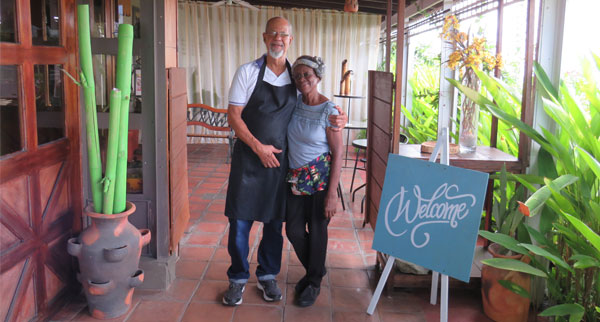
Crab and cocoa
Whether it was the thought of ravenous spiders or the exertion – more likely the latter – my stomach was rumbling, which is where Blue Crab came in. This cosy living room-like restaurant in Scarborough, in Tobago’s south, was opened 32 years ago by Tobago husband-and-wife team Kenneth and Alison Sardinha. While Kenneth cooks, Alison flits around the restaurant, refilling drinks and fussing over customers like an affectionate granny.
“This cosy living room-like restaurant in Scarborough, in Tobago’s south, was opened 32 years ago by Tobago husband-and-wife team Kenneth and Alison Sardinha.”
As we devoured our fresh fish, she regaled us with tales of her travels, but told us nothing can keep her away from her beloved Tobago.
One thing’s for sure – you’d never go hungry here. We skipped dessert and opted for a chocolate fix at the Tobago Cocoa Estate. Its chocolate is sold worldwide – including in London’s Fortnum & Mason – and its Laura bar won gold at the International Chocolate Awards last year.
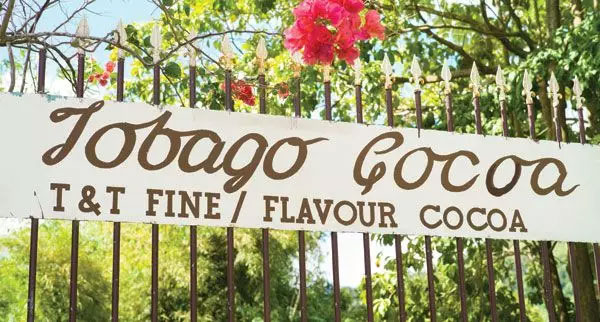
Plantation manager Harry showed me how cocoa seeds are air-dried, before leading me through the enormous estate, pointing out different types of cocoa plant. He pulled a rugby ball-sized pod off a branch and hacked it open to reveal coconut-white flesh, then plucked out a cocoa seed and popped one in his mouth. I followed suit. The seeds are inedible, but surrounded by layers of sweet white flesh that locals love. Not as delicious as the Laura bar, but close.
“At Fort King George, the cells once inhabited by newly-arrived slaves make for an important, albeit harrowing, stop-off for anyone interested in Tobago’s history.”
We headed south, passing signposts for places such as Speyside and Scarborough, though a sign for Congo Hill hinted at Tobago’s darker period. At Fort King George, the cells once inhabited by newly-arrived slaves make for an important, albeit harrowing, stop-off for anyone interested in Tobago’s history.
Slaves arrived via a tunnel connected to the harbour, and it’s chilling to think of them emerging from the belly of the ship, only to be funnelled into a dark tunnel leading to yet another prison. On a stone wall, hundreds of cement blobs mark bullet holes, as slaves who angered their masters were lined up here and shot.
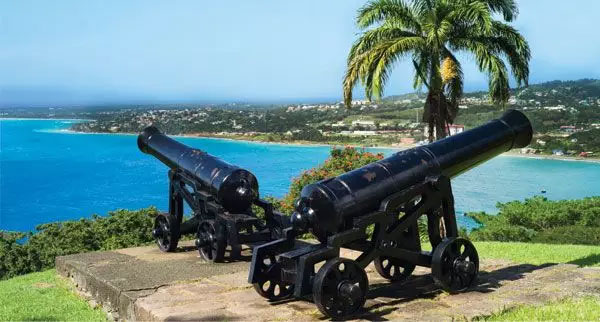
But the fort isn’t all doom and gloom. Among the palm trees, flower beds and shiny cannons, I came across the stubby yet strangely beautiful powder magazine, a building used to store gun powder (its thick walls a reminder that a little extra protection was necessary).
The fort’s small museum is packed with artefacts that reflect not just Tobago’s history, but also the history of the African countries from which the slaves came.
One of the most spectacular items is the stuffed bird of paradise, with its startling, foot-long plumage. Elsewhere, there was the death mask of Patrick Castagne, composer of Trinidad and Tobago’s national anthem, and obsidian knives used by Tobago’s first inhabitants.
“I handed him some crumpled Tobago dollars, in return for a bag containing my favourite Tobago produce – four Laura chocolate bars.”
My final meal was at Kariwak Holistic Haven, a greenery-filled restaurant and boutique hotel where food is prepared using ingredients plucked from the garden (the homemade peppermint ice cream is divine).
However, before my flight I had one more thing to fit in: a hastily arranged rendezvous in the car park to meet cocoa plantation manager Harry. I handed him some crumpled Tobago dollars, in return for a bag containing my favourite Tobago produce – four Laura chocolate bars.
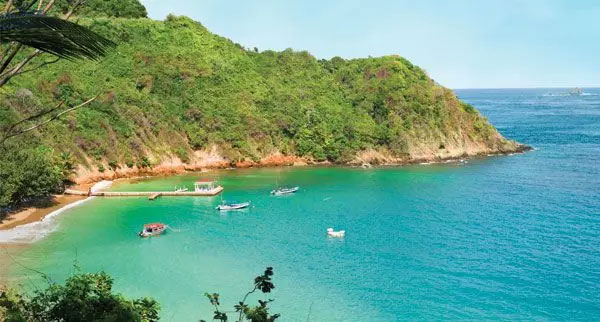
Sample products
Funway Holidays offers a seven-night break in Tobago at Blue Waters Inn, including flights with Virgin Atlantic, departing July 13, from £1,265 per person, based on two adults sharing.
funway4agents.co.uk
Western & Oriental offers seven nights at the Coco Reef Resort and Spa, including flights, from £1,229 per person based on two adults sharing, for bookings made by March 31. Based on travel before October 31.
westernoriental.com
Read more
Back to nature adventures in Barbados
Guadeloupe: Caribbean without the crowds
Active in Antigua: Carlisle Bay


